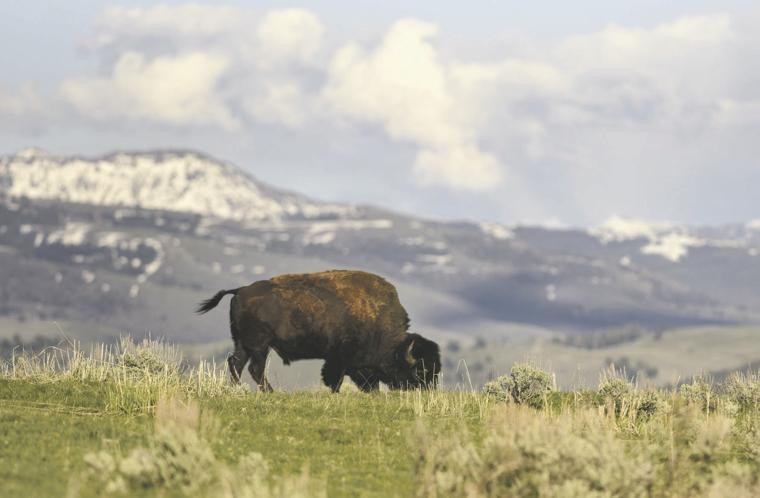A group of Gardiner, Montana, residents offered wildlife managers a few ideas Wednesday with hopes of improving the safety and aesthetics of the annual Yellowstone bison hunt just outside the park’s borders.
Members of the Bear Creek Council offered six recommendations at a meeting of the various tribal, state and federal agencies involved in the Interagency Bison Management Plan. The group’s ideas focused on two heavily used hunt areas near Gardiner, which is just norther of Yellowstone — one west of the Yellowstone River known as Beattie Gulch and the other along the road running from Gardiner to Jardine.
A few of the recommendations centered on educating hunters and locals about the hunt, ideas that are largely uncontroversial. But others were aimed at expanding an existing clean zone near Beattie Gulch and adding a new one in the area northeast of Gardiner.
Rick Lamplugh, a member of the Bear Creek Council, said adding a zone northeast of town where shooting and gutting of animals was blocked could help deal with what residents have complained about for years — gunfire near homes and bison remains left to rot on the side of the road long after hunting season.
“It would eliminate a whole bunch of issues and problems,” Lamplugh said.
But some tribal officials pushed back, not wanting to see any additional restrictions placed on hunters exercising their treaty rights to go after Yellowstone bison. Tom McDonald, a wildlife manager for the Confederated Salish and Kootenai Tribes, said he thinks there are other ways to deal with safety problems that could be tried before further limiting where hunters can hunt.
“I just don’t think we’re there,” McDonald said.
Wednesday’s meeting was far from the first time the government officials who manage Yellowstone bison lost hours talking about the hunt near Gardiner, which arrives each winter when bison decide to migrate north out of the park in search of food. Residents have complained regularly about the hunt.
Officials agreed Wednesday to spend time reviewing the hodgepodge of regulations that govern hunting in the Gardiner Basin and studying the impacts additional restrictions might have. How additional restrictions would be implemented remains an open question, given the complexity of the hunt there.
There’s no common set of regulations that governs hunting there. Hunters chasing bison are licensed either through one of seven Native American tribes from around the West or through the state of Montana, and each individual hunter is subject only to the regulations of the agency that licensed them.
Hunt managers have made voluntary agreements aimed at improving the hunt in recent years, beginning with a clean zone on the west side of a county road where hunters can’t shoot an animal. A few years ago, some tribes agreed to limit the number of hunters in Beattie Gulch and to coordinate daily hunting activity.
The requests from the Bear Creek Council came after a fairly light hunting season. A little more than 100 bison were taken by hunters this past winter, the low total thanks to a slow migration.
Bear Creek Council organized a trip to Beattie Gulch this spring for bison managers to point out what’s left when hunting season is over. They walked people past decomposing rib cages, other leftover bones and at least one bison fetus.
They worry those remains could serve as an attractant for bears and wolves. The group’s recommended clean zone expansion would add 100 yards to the 200-yard buffer at Beattie Gulch and create a 150-yard buffer on stretches of Jardine and Travertine roads.
McDonald, however, said he didn’t think what was visible during the trip to Beattie Gulch last spring warranted any further steps to protect the public from predators.
Bret Haskett, a wildlife official for the Shoshone-Bannock Tribes, said pushing hunters farther from the road could make it tougher for them to fully clean up the bison’s remains, too. And he thinks the tribes have tried to work with the people of Gardiner in the past.
Lamplugh said they expected pushback from the tribes on the clean zone idea, but that they’re not going to stop pushing for it.
“We’re not going to roll over,” he said.



